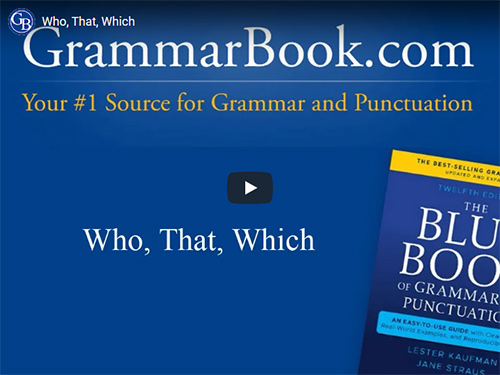|
The impact of language is often just as much about its sound as its meanings and organization of words. When used with skill and well-aimed subtlety, certain devices in American English can add extra voice and harmony to our writing.
Read the following aloud to yourself:
| If we're lucky, the truck's gear shift won't get stuck. |
What do you notice about the sound of the sentence? You might be aware of its assonance, the repetition of vowel sounds:
| If we're lucky, the truck's gear shift won't get stuck. |
The sentence also includes another aspect known as consonance, which is the repetition of consonant sounds in two or more words:
| If we're lucky, the truck's gear shift won't get stuck. |
The consonance in the sentence also achieves rhythm through rhyme (truck and stuck, as well as immediate kinship to lucky).
Consonance: Why We Use It
Like assonance, consonance is an intensifying element of speech and composition. Consonance appeals to our attraction to the sounds of words beyond their literal meanings. The sounds become the focus beyond the letters themselves.
Consonance can appear in the beginning, middle, or end of words. As writers sharpening our precision and eloquence, we'll often apply consonance to:
| make words and messages memorable. Think of how consonance appears throughout commercial culture to create a "hook": |
| Best Buy |
Dunkin' Donuts |
| Krispy Kreme |
Coca-Cola |
| Constant Contact |
PayPal |
| Tic Tac |
What's in Your Wallet? (Capital One tagline) |
| make words even more musical. When we're listening to a song we like, in addition to the arrangement and melody, we'll often be drawn to consonant lyrics: |
We're gonna rock around the clock tonight
We're gonna rock, rock, rock 'til broad daylight
We're gonna rock, gonna rock around the clock tonight
("Rock Around the Clock" by Bill Haley and His Comets)
Just a small-town girl
Livin' in a lonely world
She took the midnight train going anywhere
("Don't Stop Believin'" by Journey) |
|
| Both examples show how repeating consonant sounds make the lyrics leap from the song and add to the intended spirit conveyed.
reinforce imagery. Consonance can add extra color to imitations or representations of natural sounds in writing (also known as onomatopoeia): bow-wow; cha-ching; the pitter-patter of rain; plop plop, fizz fizz (Alka-Seltzer slogan).
slow the reading process. Reading can sometimes be a swift or hurried activity, especially within our current world of limitless content. Writing with consonance can slow a reader's movement through a passage by emphasizing the distinct sounds of our language. This in turn can also aid thought, comprehension, and retention. |
Consonance: More Examples
With a further understanding of consonance, you'll likely recognize or recall it in everything from popular culture to daily conversation:
| best bet |
Wizard of Oz |
bye-bye |
| she sells seashells by the seashore |
Beastie Boys |
X marks the spot |
| Bilbo Baggins |
Fred Flintstone |
Jack and Jill |
| Rudolph the Red-Nosed Reindeer |
Foo Fighters |
Peter Piper |
Consonance and Alliteration
If you've been noticing that consonance often involves starting sounds (i.e., first letters), you're onto something.
That's because consonance frequently appears with alliteration, which is the repetition of consonant or vowel sounds at the start of words or in their stressed syllables.
Examples
Is Mickey going to marry Miriam?
Make sure the X marks the right spot by the sassafras tree.
Annie told me Dave received a diamond-encrusted medal for infomercial excellence. |
If a consonant sound appears in an unstressed syllable, it is not alliteration.
| The amphibian from Christopher's tank is friendly and furry. |
This sentence contains alliteration, but Christopher is not a part of it because the ph sound is in an unstressed syllable.
Consonance: Guideline Review
Let's recap the principles for reinforcing skill with consonance in writing.
1) Remember that consonance is the repetition of consonant sounds in two or more words. The sounds do not apply to letters used and can appear anywhere in the word.
Examples
theatrical neanderthal
rough yet fluffy
Christopher's amphibian |
2) Consonance can include alliteration as well. The consonant sounds must start the words or appear in their stressed syllables.
Examples
PayPal
Peter Piper
friendly, furry amphibian |
3) As with any technique, we should use consonance with proper moderation. When we include it with judicious restraint, we can further develop style, voice, and rhythm; when we overapply it, our writing can become distracting, obvious, and even attention-seeking.
Consider the following sentence:
| The wanderer from Wales wound his way to the welcoming winery. |
The statement is grammatical, and it even has its own rhythm and "song." However, it also can make us more focused on the barrage of consonant sounds than on what's being expressed.
Good consonance should balance sound with expression so they complement each other. We can restore the sentence with some revision:
| The Welsh wanderer meandered to the friendly winery. |
Our new treatment makes the consonance less heavy-handed while also reducing word count in expressing the information that best serves the reader.
Related Topic
Writing with Rhythm and Sound
|





